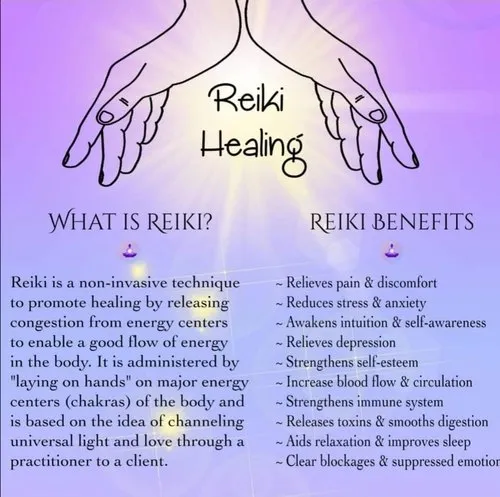
The process of Reiki healing involves the transfer of healing energy from the palms of the practitioner to the patient. It has emerged as a popular holistic treatment in recent times. However, these sessions can sometimes be a bit costly. So, people wonder if Reiki is covered by insurance.
So go through this blog to learn about the current condition of insurance coverage for this therapy, factors to consider, and different alternatives.
What is Reiki?
Reiki is a Japanese energy healing practice that involves using hands-on or distant techniques to balance energy, promote relaxation, and support the body’s natural healing processes.
It is an energy-based healing method first introduced in Japan in the early 20th century. It is a technique where universal life force energy is transmitted through the hands of a practitioner into an individual. The Reiki healers believe that this flow can heal patients physically, emotionally, and spiritually.
A typical session implies that patients lie down fully dressed on massage tables. Their bodies are covered with the light hands of practitioners who may or may not touch them.
Some proponents say that it helps with relaxation, stress reduction, pain management, and general well-being. Some people use it along with traditional medicine and treatments.
This procedure usually takes about 60-90 minutes each time. First there is normally a short conversation regarding what the patient’s requirements and feelings are before they begin. During this process many therapists lay their fingers above or on specific parts of the patient’s body which includes necks , arms , legs , feet plus other areas that require healing .
There are also shorter sessions that take about thirty minutes, especially for people who just want to relax or get energized.
What Is The Current State of Insurance Coverage for Reiki?

Insurance coverage for Reiki varies widely, with some plans offering partial reimbursement or coverage as alternative therapy. Check with specific insurance providers for detailed coverage options.
The majority of mainstream health insurers in the US don’t cover reiki as a stand-alone service because it is seen as an alternative or complement therapy, and there is very little scientific evidence to support its use in treating diseases.
However, sometimes, there are certain instances where insurance can partially cover Reiki sessions. The following are some examples:
In some hospitals, for instance, this therapy may be available through an integrative medicine program. In such situations, it could be covered by insurance if ordered by a physician as part of a care strategy.
Some states’ workers’ compensation programs may cover this alternative healing modality if it is considered advantageous to an employee’s recovery from work-related injury.
How Much Does Reiki Cost in the US?
In the US, Reiki sessions typically cost between $50 to $100 per hour, though prices can vary based on location and practitioner experience.
In the United States, prices for a single session of this therapy differ according to practitioner experience, location, and length of a single session. Typically, one-hour therapy sessions cost between $50 and $100 on average, while prices can reach up to $150 or even more per session in major cities or when dealing with highly experienced practitioners.
Customers seeking treatment discounts might want to look into package deals advertised by some providers or sliding scale fees based on income levels. Moreover, community centers or even associated schools may have reduced-cost or donation-based sessions for training purposes in this field.
What is Influencing Reiki Insurance Coverage?
Reiki insurance coverage is influenced by its recognition as an alternative therapy, varying state regulations, demand for holistic treatments, and individual insurance policies’ flexibility.
Insurance companies usually base their coverage decisions on proof-based medicine. The lack of proper scientific study backing it’s efficacy for specific health conditions is the reason why this treatment receives limited insurance coverage.
As compared to many conventional medical practices, there are no standardized licensing or regulation requirements for Reiki in most countries. Hence, insurance firms cannot easily ascertain whether practitioners’ qualifications or quality of care is up to the mark.
The cost-effectiveness of treatments is a measure used by insurers when deciding which ones to cover. Due to the lack of substantial evidence that shows the long-term benefits of this alternative healing method and its inability to reduce overall healthcare costs, insurers are reluctant to include it in their plans.
How To Find Your Way Through Insurance Coverage?
To find Reiki insurance coverage, review your policy, contact your provider, ask your practitioner for documentation, and consider wellness plans offering alternative therapy coverage.
It is important that you reach out directly to your insurance company if you want to receive treatment from Reiki healers. Ask them about their policies regarding alternative and complementary therapies and find out if there are any conditions under which this therapy may be covered.
Some employers have wellness programs that cover alternative therapies. Check if such options exist at your workplace by consulting with your human resource department.
Certain medical facilities offer integrative medicine programs that consist of alternative healing methods like Reiki treatment. In case such institutions accept payment through your insurance provider, then you can get access to this therapy in addition to other services being offered as part of a comprehensive treatment plan.
What Alternative Access Approaches For Meeting Reiki Cost?

Alternative approaches to affording Reiki include seeking sliding scale fees, attending group sessions, finding community-based programs, or exploring wellness packages and discounts offered by practitioners.
Many patients who look for Reiki therapies decide to pay in cash. Although this may cost more, it gives them the freedom to choose the therapists and the number of treatments they want.
Some Reiki healers have a sliding scale fee, which is tied to income levels so that even more people can afford treatment. Furthermore, community clinics or wellness centers could have discounted prices.
A lot of healers offer courses through which one is taught how to administer this therapy unto one’s own self and others. This can be a cheaper means in the long run for those interested in making this therapy part of their health routine.
Is There Any Future of Reiki and Insurance Coverage?
The future of Reiki and insurance coverage may expand as demand for holistic therapies grows, but widespread coverage will likely depend on more scientific validation and consumer advocacy.
There has been increased research on the applicability of Reiki as there is growing interest in alternative forms complementary therapy. In case future surveys demonstrate that there are clear health advantages, insurance firms might change their mind towards covering it.
Alternative medicine lobbying groups are working hard towards modifying healthcare policies, insurance regulations among others. They hope this will facilitate eventual acceptance as well wider coverage for this type of therapies by such organizations.
With more healthcare providers accepting holistic practices as possible remedies, there may be an increase in conventional medical structures integrating things like Reiki. As a result, many insurance options could open up.
Conclusion
Even though most mainstream health insurance plans do not cover expenses incurred through Reiki’s services, some non-mainstream options exist. As research continues, it impacts how healthcare is offered, hence changing the way health insurers cover alternative healing methods. In the meantime, individuals interested in this therapy can explore various avenues to access this complementary healing practice.

